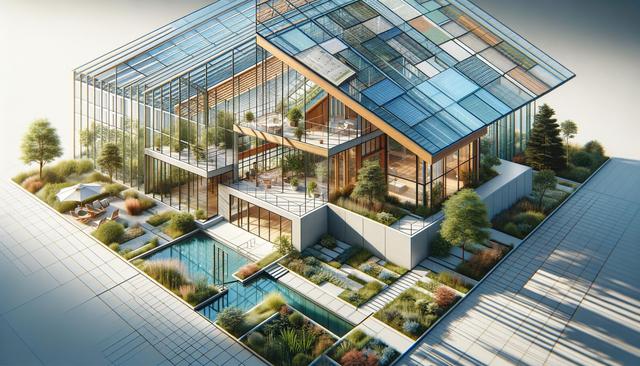What Are Polycarbonate Panels?
Polycarbonate panels are a type of thermoplastic material known for their high impact resistance, lightweight properties, and optical clarity. These panels are manufactured through an extrusion process and are commonly used in applications where durability and light transmission are essential. Available in various forms, such as solid, multiwall, and corrugated sheets, polycarbonate panels offer construction professionals a flexible and reliable material for diverse building needs.
One of the defining features of polycarbonate panels is their ability to withstand extreme weather conditions, making them suitable for both indoor and outdoor use. Their UV-resistant coating also ensures long-term performance under direct sunlight, reducing the risk of yellowing or degradation. This makes them ideal for glazing, roofing, skylights, and greenhouse installations where natural light is desired without compromising durability.
Applications Across Construction Sectors
The adaptability of polycarbonate panels has led to their widespread use across various sectors of construction. From commercial buildings to residential homes, these panels provide practical solutions that combine aesthetics with functionality. Some of the most common applications include:
- Skylights and daylighting systems that improve energy efficiency
- Greenhouses that benefit from controlled light diffusion
- Interior partitions for modern office layouts
- Canopies and awnings that offer weather protection
- Wall cladding and facades for a contemporary look
In commercial projects, architects often choose multiwall polycarbonate panels for their thermal insulation properties, which contribute to energy savings. In contrast, solid panels are preferred in safety glazing where impact resistance is a priority. The material’s lightweight nature also simplifies installation, reducing labor time and associated costs.
Advantages Over Traditional Materials
Polycarbonate panels offer several advantages over traditional construction materials such as glass, acrylic, or fiberglass. Their impact resistance—up to 200 times greater than glass—makes them a safer alternative in environments where breakage could pose a risk. Additionally, their flexibility allows for innovative architectural designs that are difficult to achieve with more rigid materials.
Key benefits include:
- High light transmission rates, comparable to glass
- Excellent thermal insulation in multiwall configurations
- Resistance to chemicals and environmental elements
- Lower transportation and handling costs due to their lightweight nature
- Ease of cutting and shaping without specialized tools
These advantages make polycarbonate panels an attractive option for modern construction practices that prioritize both sustainability and performance.
Environmental Impact and Sustainability
Sustainability is a growing concern in construction, and polycarbonate panels contribute positively in several ways. Firstly, their long lifespan reduces the need for frequent replacements, which in turn lowers material waste. Many manufacturers also offer recyclable options and panels made from post-industrial recycled content, aligning with green building standards.
Furthermore, the energy efficiency gained from using polycarbonate panels in daylighting and insulation applications supports sustainable building certifications such as LEED. By reducing reliance on artificial lighting and HVAC systems, these panels help to minimize a building’s overall carbon footprint. This makes them a valuable component in eco-conscious architecture.
In addition to their environmental benefits, polycarbonate panels are often manufactured using less energy compared to traditional alternatives like glass, further enhancing their appeal from a sustainability perspective.
Innovations and Future Trends
The use of polycarbonate panels is continuously evolving with new innovations aimed at enhancing their performance and appeal. Advances in surface treatments have led to improved scratch resistance and anti-fog properties, expanding their usability in demanding environments. Additionally, integration with smart technologies, such as light-adjusting tints or photovoltaic cells, is opening new possibilities in intelligent building design.
Looking ahead, the demand for lightweight, durable, and energy-efficient materials is expected to grow, and polycarbonate panels are well-positioned to meet these needs. Innovations in composite blends and manufacturing techniques may also lead to even more specialized applications, such as noise-reducing panels or enhanced fire-resistant grades.
As construction continues to embrace sustainable and adaptive solutions, polycarbonate panels will likely remain a key material for forward-thinking projects across residential, commercial, and industrial sectors.






